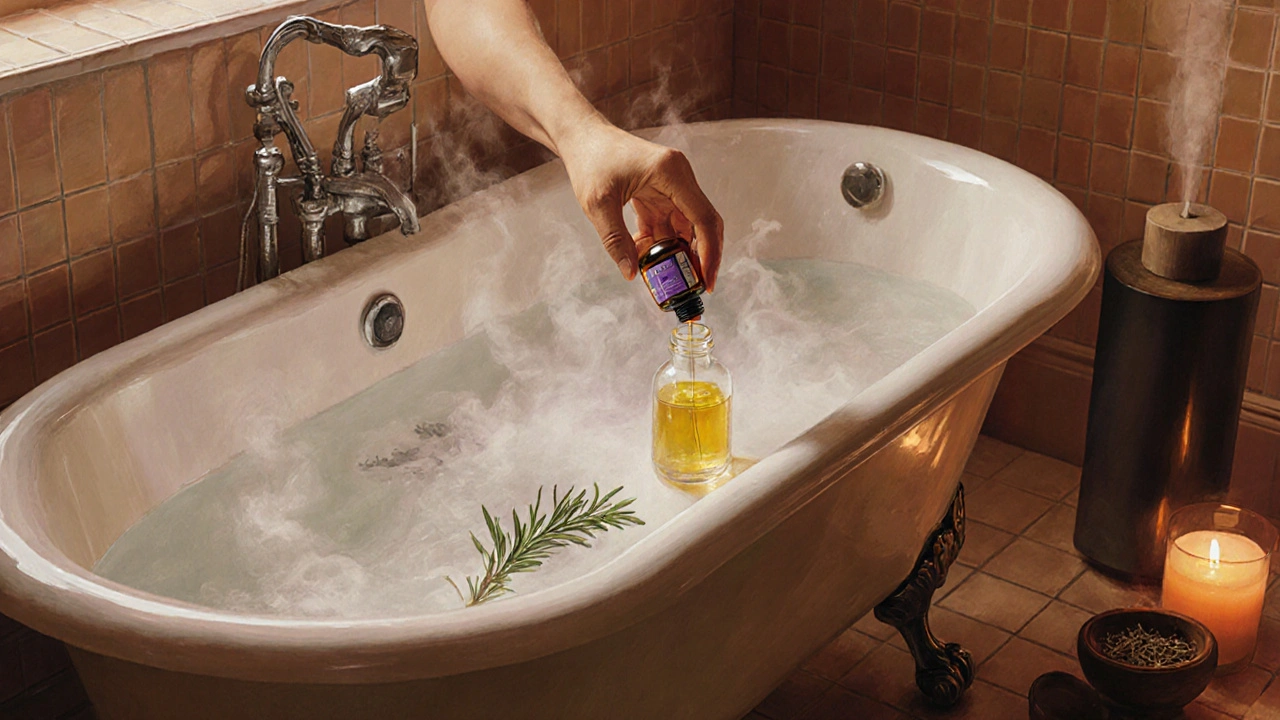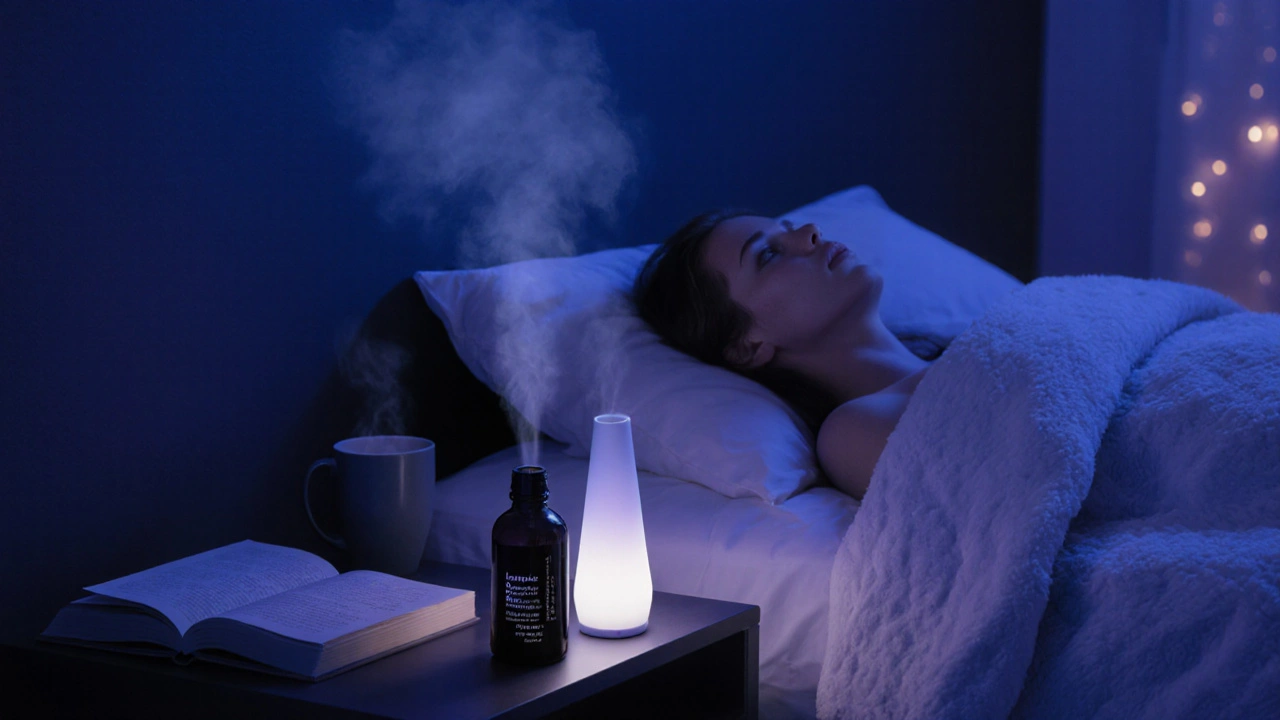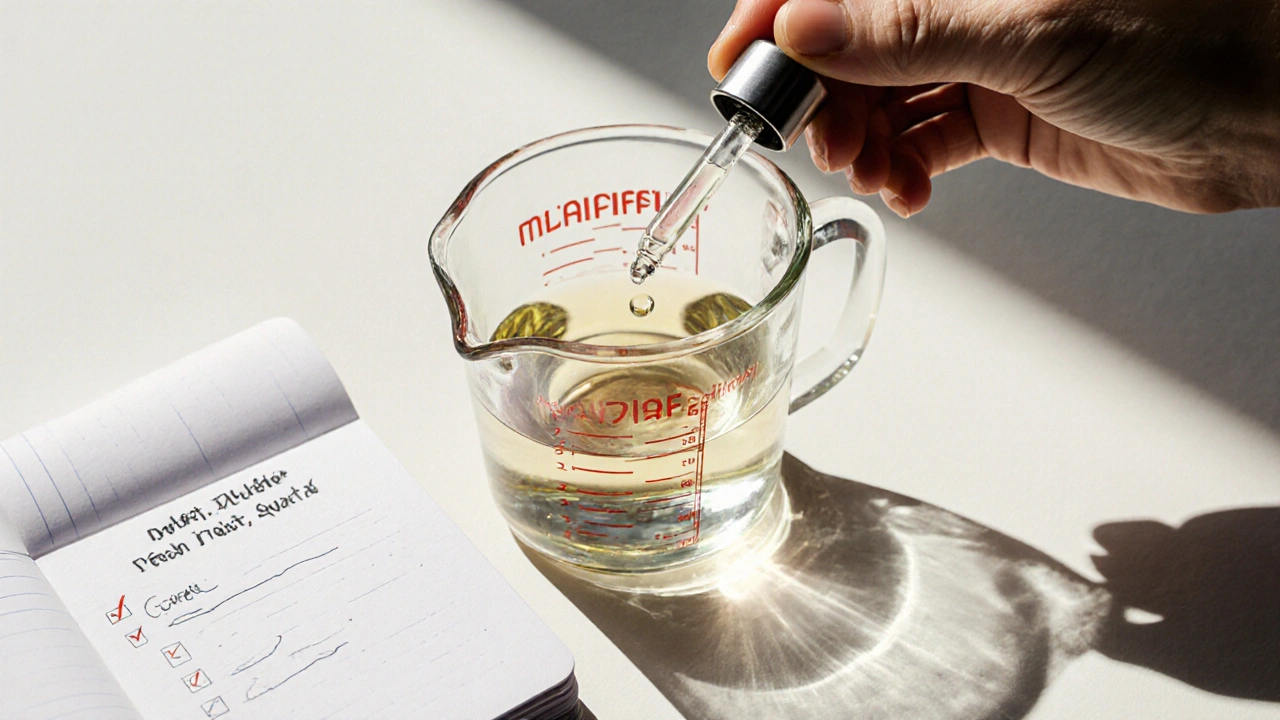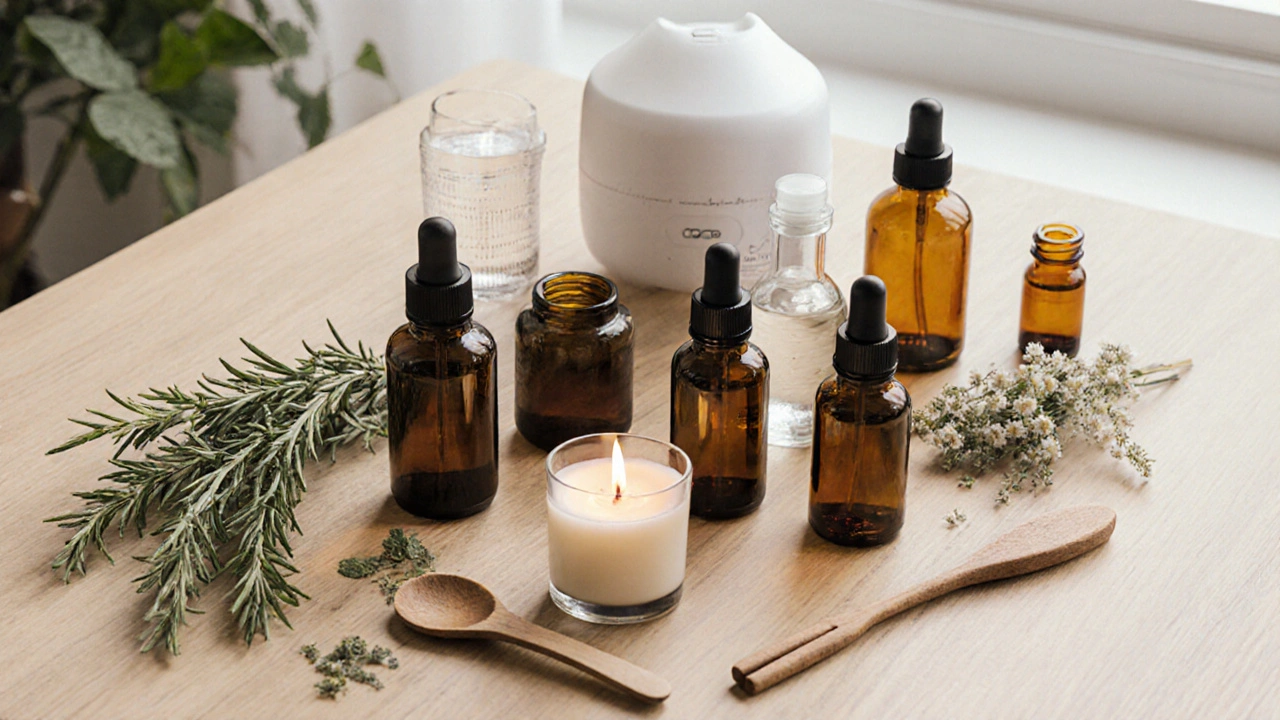Aromatherapy Ingredient Selector
Ingredient Details
Safety Tips
Blend Builder
Create your own aromatherapy blend by selecting top, middle, and base notes:
Key Takeaways
- Aromatherapy includes plants, herbs, carrier oils, and practices beyond just essential oils.
- Different delivery methods-diffusers, topical blends, baths, and massage-affect how aromas work.
- Safety hinges on proper dilution, quality sourcing, and awareness of contraindications.
- Integrating aromatherapy into daily routines can boost mood, focus, and sleep without replacing medical care.
- Choosing the right carrier, blend, and device is key to getting consistent results.
When you hear the word aromatherapy is the therapeutic use of plant‑derived scents to influence mind and body, most people picture a bottle of lavender oil and a sleek ultrasonic diffuser. That’s a useful slice of the picture, but the field stretches far beyond essential oils. From aromatic herbs steeped in hot water to carrier oils that soften the skin while delivering fragrance, there’s a whole toolbox waiting to be explored.
In this guide we’ll walk through the major ingredients, delivery methods, safety rules, and practical tips so you can move from “I use lavender oil” to a nuanced, personalized aromatherapy practice.
Beyond Essential Oils: The Broader Palette
Essential oil is a concentrated, volatile extract obtained from plant material through steam distillation or cold‑pressing. Its potency makes it perfect for diffusion or topical use-when diluted. But aromatherapy also embraces:
- Aromatic herbs are fresh or dried plant parts like rosemary, mint, or chamomile that release scent when bruised, steeped, or burned.
- Carrier oils are non‑volatile base oils such as jojoba, sweet almond, or fractionated coconut that dilute essential oils and add skin‑friendly nutrients.
- Hydrosols are floral waters left over after distillation, offering a milder scent profile for skin care.
- Aromatherapy candles are wax blends infused with fragrance oils that release scent slowly as they burn.
Each component brings its own chemistry, aroma longevity, and ideal usage scenario. Understanding the differences helps you pick the right tool for the right mood.

Delivery Methods: How Scent Gets to You
Whether you’re in a cramped office or a spacious bedroom, the way you deliver aroma changes its impact.
- Diffusers - Ultrasonic, nebulizing, and heat‑based devices each vaporize oils differently. Ultrasonic diffusers use water to create a fine mist, preserving oil integrity. Nebulizers atomize pure oil without water, delivering a stronger scent.
- Topical application - Mixing a few drops of essential oil with a carrier oil creates a massage blend or a daily body oil. The skin absorbs both the fragrance and the therapeutic constituents.
- Inhalation - Simple methods like a cotton ball tucked in a pillowcase or a personal inhaler let you enjoy scent on the go.
- Baths & showers - Adding a few drops of oil (pre‑diluted in a carrier or a dispersant like milk) to bathwater releases aroma during a relaxing soak.
- Cooking & baking - Certain food‑grade essential oils (e.g., citrus, peppermint) can flavor dishes, offering a culinary twist to aromatherapy.
Choosing a method depends on the desired intensity, duration, and setting. For a subtle background vibe, an ultrasonic diffuser works well. If you need a quick mental pick‑up at work, a personal inhaler might be better.
Safety First: Dilution, Quality, and Contraindications
The biggest error beginners make is using essential oils undiluted on skin or inhaling them for too long. Here’s a quick safety checklist:
- Dilution Ratio - Use 1-2% (i.e., 1-2 drops of essential oil per 5mL of carrier oil) for daily adult use. For children, pregnant women, or sensitive skin, drop to 0.5%.
- Patch Test - Apply a tiny diluted spot on the inner forearm and wait 24hours. If redness or itching appears, discontinue.
- Quality Assurance - Look for oils that are 100% pure, therapeutic grade, and sourced from reputable growers. Certified organic or wild‑crafted labels add confidence.
- Avoid Certain Oils - Some oils (e.g., wintergreen, camphor, sage) can be toxic in high doses or contraindicated for specific health conditions.
- Ventilation - When using a diffuser, keep the room well‑ventilated. Over‑exposure can cause headaches or dizziness.
These rules help you enjoy the benefits without the dreaded skin reactions or respiratory irritation.

Blending Basics: Crafting Your Own Signature Aromas
Creating blends is part science, part art. A balanced blend typically follows the “top‑middle‑base” structure:
- Top notes - Light, volatile scents (e.g., citrus, peppermint) that are noticed first.
- Middle notes - Heart aromas (e.g., lavender, geranium) that provide the main character.
- Base notes - Deep, lasting scents (e.g., sandalwood, patchouli) that anchor the blend.
Start with a 3‑oil ratio like 3‑2‑1 (top:middle:base) and adjust based on personal preference. Here’s a quick starter blend for relaxation:
- 5drops lavender essential oil
- 3drops bergamot essential oil
- 2drops vetiver essential oil
- 20mL sweet almond carrier oil
Shake well, store in a dark glass bottle, and use 2-3 drops on pulse points before bedtime.
Integrating Aromatherapy into Everyday Life
To make scent a habit, tie it to routine triggers:
- Morning boost - Diffuse peppermint or citrus while brewing coffee.
- Midday focus - Apply a rosemary‑rosemary blend to temples before a Zoom call.
- Evening wind‑down - Add a few drops of lavender to a pillowcase or a warm bath.
- Exercise recovery - Mix eucalyptus with a carrier oil and massage sore muscles post‑workout.
Consistency turns a pleasant scent into a Pavlovian cue for calm, alertness, or sleep.

Comparison: Essential Oils vs. Aromatic Herbs
| Aspect | Essential Oils | Aromatic Herbs |
|---|---|---|
| Source | Extracted from leaves, flowers, bark, or roots | Fresh or dried plant material |
| Extraction Method | Steam distillation, cold‑press, CO₂ extraction | Bruising, steeping, burning |
| Typical Use | Diffusion, topical, inhaler, bath | Tea, poultice, incense, cooking |
| Aroma Longevity | Hours to days (depends on delivery) | Minutes to a few hours |
| Safety Notes | Requires dilution; potential skin sensitizers | Generally milder; watch for allergies |
Both options can coexist. For a quick aroma boost, toss a sprig of rosemary into a pot of boiling water. For a long‑lasting scent, diffuse a few drops of rosemary oil.
Common Pitfalls and How to Avoid Them
- Over‑dilution - Using too much carrier oil can mute the therapeutic effect. Stick to the recommended percentage.
- Reusing old oil bottles - Oxidation reduces potency and can cause irritation. Replace bottles every 12‑18 months.
- Mixing incompatible oils - Some blends clash (e.g., citrus with strong base woods) and create an unpleasant smell.
- Ignoring personal sensitivities - Keep a scent journal to track reactions and preferences.
By staying mindful of these issues, you’ll enjoy a smoother aromatherapy journey.
Frequently Asked Questions
Can I use aromatherapy if I have asthma?
Mild, well‑ventilated diffusion of soothing scents like lavender or eucalyptus can be okay for many asthma sufferers, but always start with short sessions and watch for irritation. If you notice wheezing, stop immediately and consult a doctor.
What’s the difference between a diffuser and a humidifier?
A diffuser adds aroma to the air, while a humidifier’s primary job is to increase humidity. Some devices combine both functions, but the scent output of a dedicated diffuser is usually stronger and more consistent.
How long should I keep a blend on my skin?
Most diluted blends can stay on the skin for 4‑6hours without issue. Reapply only if the scent fades or after a shower. For sensitive skin, limit exposure to 2‑3hours.
Are there any essential oils I should avoid during pregnancy?
Yes. Oils like rosemary, clary sage, and peppermint in high concentrations are best avoided in the first trimester. Consult a qualified aromatherapist for a safe pregnancy‑friendly list.
Can I combine aromatherapy with meditation?
Absolutely. A gentle scent such as frankincense or sandalwood can deepen focus and create a ritual cue. Light a candle or use a diffuser for 5‑10minutes before you begin your meditation.
Ready to expand your scent toolbox? Start small, respect safety guidelines, and watch how a well‑chosen aroma can shift your mood, improve sleep, or boost concentration. With the right blend, carrier, and delivery method, aromatherapy becomes a versatile ally in everyday wellness.

